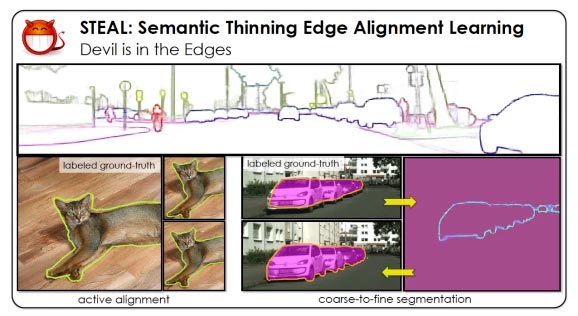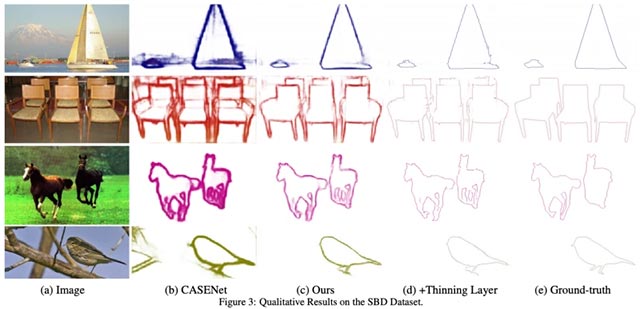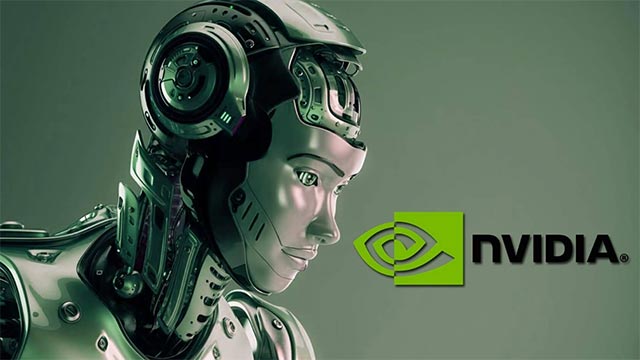Nvidia's STEAL AI offers the ability to support inference for better computer vision models
Computer science researchers from Nvidia, University of Toronto and the Institute of Vector Artificial Intelligence in Toronto have devised a more accurate method of detection and prediction where an object starts and ends. This form of knowledge can help improve inference for current computer vision (computer vision) models, and support training data labeling for future models.
In a series of experiments by the team, scientists have found that Semantically Thinned Edge Alignment Learning (STEAL) artificial intelligence model can help improve the accuracy of predictive model 'semantic boundaries 'Modern CASENet adds 4%. The ability to more accurately identify an object's boundaries and angles can provide practical applications for computer vision tasks, from image creation to 3D reproduction. to detect objects.
- 5 genius minds in the AI field join hands to create awesome robots
 Semantically Thinned Edge Alignment Learning (STEAL)
Semantically Thinned Edge Alignment Learning (STEAL)
STEAL can be applied to improve existing CNNs or physical edge detection models, but researchers also believe that it can help them label or annotate data more effectively for Computer vision models. To demonstrate this point, scientists used the STEAL method to refine Cityscapes - a set of data with content related to urban environments - first introduced at the Machine Vision conference. Calculate and Identify Model Objects (Computer Vision and Pattern Recognition - CVPR) in 2016.
Currently on GitHub, the STEAL framework has been able to learn and accurately predict every corner of the object in pixels according to the method that researchers call 'active alignment'. Clear reasoning on annotation noise in the training process, and the formula for setting the level of neural networks in learning from misleading labels from the beginning to the end also helps to produce results this.
- MIT strives to develop an AI model that can drive almost like a human
 Ability to more accurately identify the boundaries and angles of an object
Ability to more accurately identify the boundaries and angles of an object
"We will continue to show that our prediction boundaries are significantly more effective than the predicted boundaries obtained from the latest DeepLab-v3 output data, while only using the architecture is much lighter, 'said the team representative in an in-depth interview with arXiv.
The study is named: 'Devil is in the Edges: Learning Semantic Boundaries from Noisy Annotations' (roughly translated: Learning semantic boundaries from annotated noise), and will be widely introduced through a Presentation within the framework of the CVPR 2019 conference taking place in Long Beach, California. Experts from Nvidia Research have made a great contribution to this research, and they will also present the research from a personal perspective at CVPR this year.
- Japan's artificial intelligence has created ultra-realistic virtual fashion models

According to a new report, Nvidia said it will support high-performance computer hardware systems from British manufacturer Arm in 2020, and open source TensorRT parsing software. on Github to allow more customization.
You should read it
- 10 ways to prevent computer vision syndrome
- Google released a huge AI training data warehouse with over 5 million photos of 200,000 locations worldwide
- Winnow uses computer vision to help cut waste in food processing
- The 'Nobel technology' award is awarded to AI-teaching software as human
- 4 eye protection tips for computer users all day
- Apple Vision Pro achieved impressive results in durability tests
 AI models use aerial and ground data to navigate areas that are difficult to observe
AI models use aerial and ground data to navigate areas that are difficult to observe 5 genius minds in the AI field join hands to create awesome robots
5 genius minds in the AI field join hands to create awesome robots AI classifies objects on the road only by radar measurements
AI classifies objects on the road only by radar measurements The future of AI and people is cooperation
The future of AI and people is cooperation MIT strives to develop an AI model that can drive almost like a human
MIT strives to develop an AI model that can drive almost like a human Microsoft AI creates a real voice with only 200 training samples
Microsoft AI creates a real voice with only 200 training samples